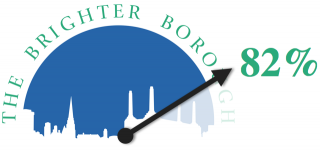View Grit bin locations in a larger map
The response to my mapping of grit bins last week has fascinated me. Of course, the overwhelming majority of people totally ignored it, but some appreciated it and it was rather flattering to be picked up by the LGIU, and even more so to have been highlighted by the webmaster of Lichfield (who is a real pioneer of open data).
But more interesting was the negative response. I cannot deny the bins are located in the north of the borough. And a few people immediately realised why: it’s because a few weeks ago, when the locations were chosen we all got together in a smoky room (we used artificial smoke, so as not to break the smoking ban) and decided that we’d totally ignore poor old Tooting. Then we guffawed, well, most of us did, some went for the muah-ha-ha-ha evil laugh.
Actually, it wasn’t like that at all (although thank-you to Paul Clarke for the inspiration in his insightful post on the snow and ice in Croydon). Instead it was an operational decision. If you know the area you’ll also realise that there is a strong correlation between the how steep the roads are and how many bins there are.
What particularly interested me is that, as far as I can tell, no-one made the accusation that there was some anti-Tooting (or anti-Labour) bias until I’d made the map. Several even used my map to prove their point, because if we were allowing politics to decide the location the first thing a Conservative council executive member would do is create and publicise a map to highlight the point!
There is inequality in the location of bins because there is inequality of terrain. Only if the borough were perfectly flat would perfectly even distribution make sense. That’s not to say the current distribution is perfect because nothing is, and the lessons from this winter’s placement will be learned and used when choosing placement for next winter. But even with that inequality, even with the imperfection that comes from constantly learning, I’d argue what we’ve got is massively better from the only way to get equality: having no bins so everyone got precisely nothing.
What conclusions can we draw? A very clear one is that people respond to data depending on how it’s presented. The grit bin locations had been well publicised, but drew little attention until put into a map on my website. I know for a fact that my website gets far far less traffic than the council website, but for some reason the map had greater traction than the list.
A second conclusion is that when presented with data, people will draw their own conclusions. To me it was quite clear that the major factor in location choice were steep roads, to others there was a socio-economic or political motivation (there are so many bins in my ward that if it were an indicator of power I’d be something like a local government demi-God rather than mundanely just representing a ward with a hill in it) and I’m sure there are all sorts of other interpretations you can draw.
But the third is that it can provoke the discussion and debate. The challenge is creating a culture in which we can use that constructively, recognising that there is no such thing as a perfect solution, recognising that not everyone gets what they want and also recognising that there’s a difference between policy and operations. On things like this, we want to get it right, providing the data on what we are doing and how we are doing it gives everything the chance to help us do just that.

 Overall performance
Overall performance After over 18 months I’ve been told by the Metropolitan Police to stop producing my crime maps.
After over 18 months I’ve been told by the Metropolitan Police to stop producing my crime maps.